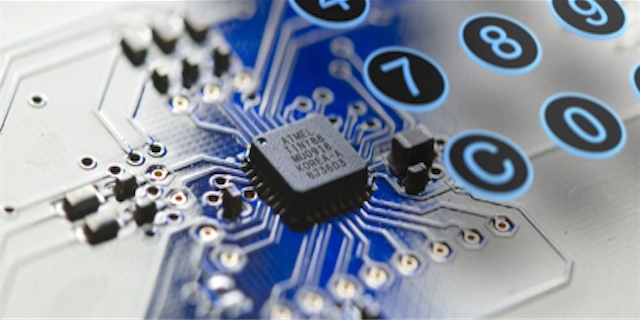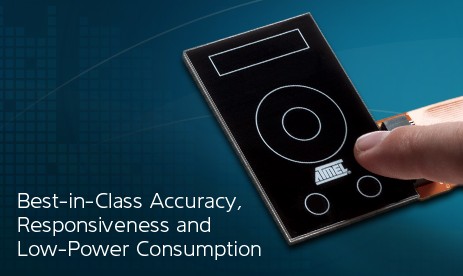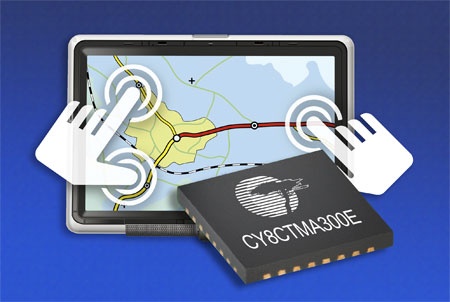Touch technology has penetrated into various application fields, and the market has put forward higher requirements for it. The current touch ICs are developing in the direction of high accuracy, low noise, high precision, fast response, and low power consumption. In the long run, the diversification of touch screens and touch methods are the key factors for manufacturers to develop touch technology. Follow the goal.
High performance challenges: accuracy, noise and power consumption
Taking the launch of the iPhone as a time node, people have formally recognized the innovation of human-computer interaction brought by touch technology to "touch is everywhere", and it has been 4 years since the blink of an eye. During this period, in addition to the transition from resistive touch to capacitive touch, from single touch to multi-touch, touch technology has also experienced a series of development improvements, such as higher precision, more Fast response speed, etc. In addition, the architecture of the touch screen has also been upgraded from stacking technology to on-cell and in-cell.

Since the main function of touch technology is to improve user experience by simplifying human-computer interaction, for touch IC manufacturers, the application market demand is the main foundation for the development of related technologies. The technology research and development of these manufacturers is mainly divided into two steps: first use high-performance touch technology to meet the basic needs of the market, and then use innovative technology to lead a new wave of applications. High performance challenges: accuracy, noise and power consumption
The traditional key touch is relatively "thick line", as long as the key behavior is quickly fed back, and as the touch technology develops toward multi-touch and screen touch, the touch application has high accuracy and high technology. Performances such as accuracy, low noise, fast response time, and low power consumption all put forward higher requirements. For example, whether it can correctly respond to the operation of each finger during multi-touch, and whether the touch screen can work normally in a humid environment, have become important indicators for users to measure touch screen technology.
Atmel maXTouch technology improves touch accuracy
In terms of improving touch accuracy alone, Atay's touch product marketing director Binay Bajaj believes that accurately tracking multiple inputs is a major design challenge. In this regard, Atmel's maXTouch technology uses mutual capacitance technology. "Mutual capacitance technology places the transmitting and receiving electrodes in an orthogonal matrix-this is actually a miniature touch screen array. Since the capacitive coupling of each point in the matrix can be measured separately, there is no ambiguity in the reported coordinates of multi-touch , So it has higher accuracy and can bring a better user experience. "And touch expert Cypress (Cypress) touch technology is to use the simultaneous analysis of self-capacitance and mutual capacitance sensor differential signal Problems with touch accuracy. "Under the real application environment, it is more challenging to grasp the accuracy of touch. For example, when using the touch screen in rainy weather or wet hands, it will bring the problems of false response, low accuracy and even failure. The system relies on capacitance alone The sensor can't distinguish the difference between finger touch and water drop 'touch'. Simultaneous analysis of the differential signal of self-capacitance and mutual-capacitance sensors is a good solution.

Cypress launches technology for subtle touch applications
In terms of touch accuracy, Cypress has introduced technology for fine touch applications. According to reports, the traditional capacitive pen simulates the size and conductivity of the finger, which makes it difficult to achieve the accuracy and sensitivity required by the user when handling special tasks such as writing and drawing. Cypress now supports 1mm nib touch, which provides a true handwriting performance experience. The company's TrueTouch series of products provide a fast refresh rate to ensure that the handwriting experience on the touch screen is similar to the handwriting experience on paper. "It also benefits from our unique single-chip solution that supports self-capacitance and mutual capacitance at the same time," Carey said.

Noise is another major challenge facing touch technology. "Especially in a variety of topological formats such as cascading, plug-in, embedded, etc., the noise brought by the display has a great impact on touch performance." Carey pointed out. Cypress currently uses embedded technology to neutralize noise, and has developed a unique, patented single-chip solution that is easily integrated into touchscreen systems. Bajaj also pointed out that touch technology must be able to reduce noise including LCD screen noise, charger noise, and environmental noise (WiFi network and microwave oven noise). "Atmel's new maXTouch E series capacitive touch engine (CTE) uses intelligent hardware filtering to solve this problem, ensuring that even large noise spikes will not affect touch performance."
LED lawn lamp is used for lighting facilities around the lawn, and is also an important landscape facility.
Led lawn Light,Led garden Light,High Quality lawn Light
Jilin Province Wanhe light Co.,Ltd , https://www.wanhelight.com